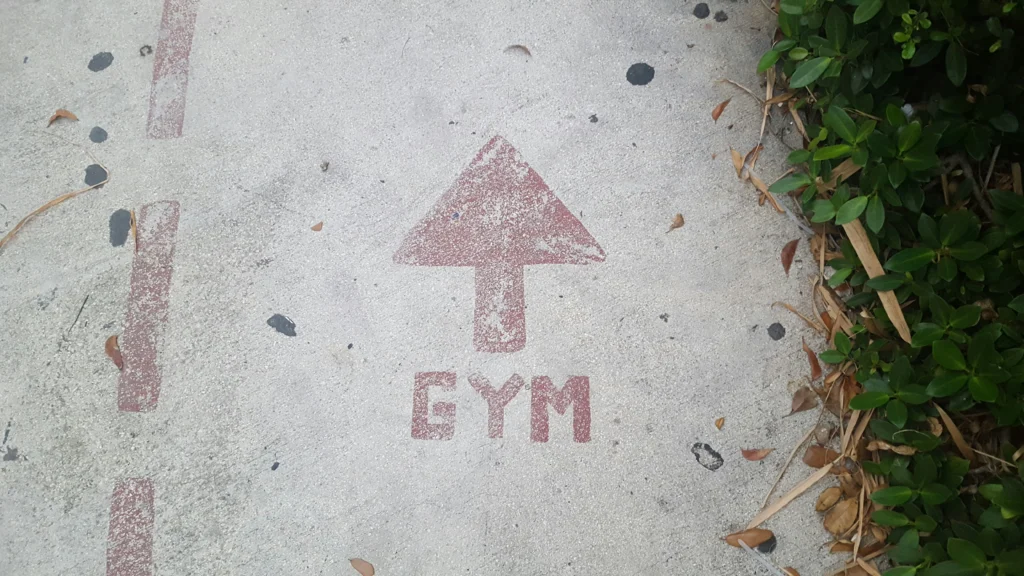Choosing the right gym management software can increase member retention, boost revenue, and simplify daily operations. This guide compares the top 15 platforms, highlights strengths and pricing, and shows where PulseFit fits when you need lead management, member engagement, and operational analytics.
How We Evaluated These Platforms
We compared platforms across criteria gym owners actually care about: lead capture and conversion, membership billing, class scheduling, check-in methods, communication tools (SMS/email), reporting and revenue analytics, integrations, onboarding effort, and price transparency.
But here’s what most guides miss: we also looked at real-world implementation challenges. Many platforms look great in demos but fall short when your front desk staff tries to use them during peak hours.
Quick Overview: The Top 15 Gym Management Software
Here are the 15 products we’ll cover. Each entry includes who it’s best for, major strengths, estimated starting price (where available), and a PulseFit comparison.
- Exercise.com – Best for gyms selling branded apps and online training
- ABC Glofox – Best for boutique studios
- Gymflow – Best for growing gyms focused on retention
- Gymdesk – Best for martial arts and specialty studios
- TeamUp – Best for small to mid-size studios
- Mindbody – Best for medium to large multi-location operations
- PushPress – Best for gym owners wanting simplicity
- Zen Planner – Best for performance tracking studios
- Virtuagym – Best for training and nutrition focused facilities
- WodBoard – Best for CrossFit boxes
- SimplyBook.me – Best for small appointment-driven studios
- Simply Studio – Best for AI-assisted scheduling
- Momence – Best for wellness and multi-service venues
- TeamSnap – Best for community sports organizations
- EZFacility – Best for complex resource booking needs
The Top 15 Gym Management Software — Detailed Reviews
1. Exercise.com
Best for: Gyms and franchises that also sell branded apps and online training
Strengths: App white-label options, workout programming, billing for client licenses
Pricing: Starts around $299/month for small studios (varies by client count)
Exercise.com targets gyms that want to expand beyond just facility access. Their platform lets you create branded mobile apps and sell online training programs. This works well if you have trainers who want to coach clients remotely or if you’re building a fitness brand that extends beyond your physical location.
The downside? It’s complex. Small studio owners often find the feature set overwhelming when they just need basic membership management.
PulseFit comparison: Exercise.com excels at branded apps and online programming. PulseFit focuses more on lead flow, daily operations (through the Actionable Items Dashboard), and conversion workflows. Choose Exercise.com if you’re building a digital fitness brand. Choose PulseFit if front desk efficiency and follow-up are your priorities.
2. ABC Glofox
Best for: Boutique studios and single-location specialists
Strengths: Branded mobile booking, class scheduling UX, strong studio support
Pricing: Custom (contact provider)
Glofox built their platform specifically for boutique fitness studios. Their member-facing booking app is polished, and they understand the unique needs of specialized fitness businesses like yoga studios, Pilates, and barre classes.
The challenge with Glofox is pricing transparency. Custom pricing often means higher costs, and you won’t know what you’re paying until you’re deep in the sales process.
PulseFit comparison: Glofox creates excellent member booking experiences. But if your trial-to-member conversion needs work, PulseFit adds lead scoring and automated communication sequences that can improve those numbers significantly.
3. Gymflow
Best for: Growing gyms that want retention and engagement features
Strengths: Retention-focused dashboards, member engagement tools
Pricing: Plans starting around $159/month
Gymflow positions itself as a retention-first platform. They provide tools to track member engagement and identify at-risk members before they cancel. This approach makes sense since keeping existing members costs less than acquiring new ones.
However, retention tools only work if your staff consistently uses them. Many gym owners buy retention-focused software but don’t have the processes to act on the insights.
PulseFit comparison: Gymflow includes solid retention tools. PulseFit pairs similar engagement capabilities with revenue forecasting and a dedicated Actionable Items Dashboard that ensures staff follow-ups actually happen.
4. Gymdesk
Best for: Martial arts and specialty studios
Strengths: Niche workflows (belt tracking), simple enrollment and payments
Pricing: Starts near $75/month
Gymdesk serves martial arts schools, dance studios, and other specialized fitness businesses. They handle unique requirements like belt promotions, recital planning, and family billing that mainstream gym software often misses.
The software works well for its target market but lacks the marketing automation and analytics that growing businesses need.
PulseFit comparison: Gymdesk handles niche workflows effectively. PulseFit offers flexible lead pipelines and communications that can integrate with specialized platforms through the Integration Hub, adding modern CRM capabilities to niche businesses.
5. TeamUp
Best for: Small to mid-size studios with predictable pricing by active customers
Strengths: Simple pricing model, good scheduling, strong import/onboarding support
Pricing: Starts around $104/month for up to 100 active customers
TeamUp uses a straightforward pricing model based on active customers rather than features. This makes budgeting easier and eliminates surprise charges as you grow.
Their scheduling system handles most common scenarios well, and they provide good support during migration from other platforms.
PulseFit comparison: TeamUp offers easy adoption and clear pricing. Adding PulseFit’s Lead Management helps convert trial visitors into active customers more predictably, potentially improving your cost per customer.
6. Mindbody
Best for: Medium to large studios and multi-location operations with marketing needs
Strengths: Strong marketing integrations, ClassPass connectivity, reporting
Pricing: Starts around $99/month (scales with features)
Mindbody has been around longer than most competitors and offers extensive third-party integrations. Their ClassPass partnership can drive new customer acquisition, and their reporting capabilities work well for multi-location operators.
The platform can feel overwhelming for small studios, and many features require higher-tier plans.
PulseFit comparison: Mindbody provides broad marketing reach and established integrations. PulseFit focuses on operational conversion—automated follow-ups, targeted win-back campaigns, and daily task management that reduces churn through better staff execution.
7. PushPress
Best for: Gym owners who want simplicity and branded member apps
Strengths: Easy-to-use interface for scheduling, payments, and memberships
Pricing: Free plan for small studios and paid tiers for larger operations
PushPress emphasizes simplicity and ease of use. Their interface feels modern, and they offer a free plan that works for very small studios. The branded member app is included at reasonable price points.
The trade-off for simplicity is fewer advanced features. Growing gyms may outgrow PushPress as their needs become more complex.
PulseFit comparison: PushPress offers user-friendly basics. Adding PulseFit gives you deeper lead analytics, revenue forecasting, and an integrated communications module for automated nurture sequences without sacrificing the simple day-to-day experience.
8. Zen Planner
Best for: Studios focused on performance tracking and class management
Strengths: Member logbooks, scheduling, embeddable calendars, automated reminders
Pricing: Starts around $99/month for studios
Zen Planner caters to performance-focused gyms where members track workouts and progress over time. Their member logbooks and progress tracking appeal to serious fitness enthusiasts.
They handle class scheduling well and provide automated reminders that reduce no-shows.
PulseFit comparison: Zen Planner excels at member progress tracking. PulseFit complements this with revenue analytics and a task-driven dashboard so staff can act on high-value opportunities identified in reports.
9. Virtuagym
Best for: Facilities that want training and nutrition features along with memberships
Strengths: Retention dashboards, training and nutrition modules, comprehensive member management
Pricing: Contact for customized quote
Virtuagym combines gym management with training and nutrition tools. This works well for facilities that want to offer comprehensive wellness programs beyond just equipment access.
The platform includes retention dashboards and engagement tools, but the breadth of features can make it complex to implement.
PulseFit comparison: Virtuagym focuses on comprehensive training and nutrition features. PulseFit brings structured lead pipelines and communication automation that help convert leads generated by training programs into long-term recurring members.
10. WodBoard
Best for: CrossFit boxes and high-intensity functional gyms
Strengths: CrossFit-oriented scheduling, member communications, reporting tailored for box operations
Pricing: Tiered by customer volume
WodBoard was built specifically for CrossFit affiliates and understands the unique culture and operational needs of boxes. They handle WOD tracking, leaderboards, and the community aspects that make CrossFit different.
The specialization is both a strength and limitation—it works great for CrossFit but may not fit other gym types.
PulseFit comparison: WodBoard handles CrossFit-specific class flow effectively. PulseFit provides lead scoring and targeted campaigns (trial-to-member sequences) that help boxes grow class occupancy and convert drop-ins to members faster.
11. SimplyBook.me
Best for: Small studios and appointment-driven services
Strengths: Straightforward booking interface, promotions, Google integrations
Pricing: Free and tiered paid plans available
SimplyBook.me works well for appointment-based fitness services like personal training, massage therapy, or small group classes. The booking interface is clean and integrates well with Google Calendar.
However, it’s primarily a booking tool rather than a comprehensive gym management system.
PulseFit comparison: SimplyBook.me handles basic booking needs effectively. PulseFit adds member lifecycle management and automated messaging (SMS/email) that improve conversion after the initial booking and help build long-term relationships.
12. Simply Studio
Best for: Studios wanting AI assistance for scheduling and member communications
Strengths: AI assistant for schedule generation and automated notifications
Pricing: Free plan plus paid tiers
Simply Studio incorporates AI to help with scheduling optimization and member communications. The AI features can reduce administrative work for small studio owners.
The AI capabilities are still developing, and the platform may lack some traditional features that established studios need.
PulseFit comparison: Simply Studio offers AI-assisted scheduling. PulseFit’s Communications Module complements this with segmented campaigns, win-back automation, and detailed analytics that help optimize member engagement strategies.
13. Momence
Best for: Wellness studios and multi-service venues (yoga, spa, dance)
Strengths: Multi-service booking, point-of-sale system, marketing integrations
Pricing: Custom quotes based on requirements
Momence serves wellness businesses that offer multiple services like yoga classes, massage, retail, and workshops. Their POS system handles complex transactions, and they understand the operational needs of wellness centers.
The multi-service focus may include features that pure fitness businesses don’t need.
PulseFit comparison: Momence handles complex multi-service bookings well. PulseFit strengthens lead tracking and centralizes revenue analytics across services, providing a unified view of business health and member lifecycle management.
14. TeamSnap
Best for: Clubs and community sports organizations that need roster management
Strengths: Team coordination, registration, scheduling, group communication
Pricing: Free and paid plans for teams and organizations
TeamSnap serves youth sports leagues, community teams, and recreational sports organizations. They excel at roster management, game scheduling, and parent communications.
The platform focuses on team sports rather than fitness businesses, so features like membership billing and retention may be limited.
PulseFit comparison: TeamSnap manages team coordination effectively. For fitness businesses that need CRM-level follow-up and revenue forecasting, PulseFit fills that gap with integrated lead pipelines, automated communications, and business analytics.
15. EZFacility
Best for: Facilities requiring robust scheduling for clinics, events, and complex resource booking
Strengths: Advanced scheduling for clinics and events, RFID support, PCI DSS Level 1 compliance
Pricing: Contact for demo and pricing information
EZFacility handles complex scheduling scenarios like medical fitness clinics, sports complexes with multiple courts, and facilities that rent equipment or spaces. Their compliance certifications work well for healthcare-adjacent fitness businesses.
The complexity that makes EZFacility powerful for specialized uses can make it overwhelming for standard gym operations.
PulseFit comparison: EZFacility excels at complex resource management. PulseFit layers member relationship management, communications, and conversion analytics to maximize facility utilization and monthly recurring revenue.
How PulseFit Complements or Replaces Other Platforms
If you already use one of the platforms above, PulseFit can work alongside it or replace specific capabilities. Here’s how PulseFit is commonly implemented:
Lead conversion engine: PulseFit’s Lead Management System captures trial sign-ups, scores leads (hot/warm/cold), and automates staff assignments so no lead gets forgotten. This addresses a common weakness in booking-focused platforms.
Automated communications: The Communications Module sends targeted SMS and email sequences based on member lifecycle events. For example, trial reminders, trial-to-member conversion offers, and churn prevention campaigns run automatically.
Daily operations: The Actionable Items Dashboard creates prioritized task lists for staff—follow-ups, payment collections, membership renewals—improving consistency and reducing manual tracking.
Member and revenue insights: Combined Member Management and Revenue Analytics provide attendance trends, trainer utilization, and monthly recurring revenue forecasting, helping owners make data-driven decisions.
Integration capabilities: PulseFit connects via API and Zapier to most existing booking or access systems, so you can keep familiar member-facing tools while adding advanced CRM and analytics.
Use PulseFit when you want to improve conversion rates, increase retention, and create task-driven operational consistency without completely replacing your existing scheduling tools.
Practical Platform Selection Checklist
Use this checklist during vendor evaluation. Score each platform 1-5 based on your business priorities:
Lead capture and follow-up automation — Can the system automate trial follow-ups and assign leads to staff? (This is where many platforms fall short)
Member billing flexibility — Recurring plans, membership freezes, multi-tier pricing options
Check-in and access control — Mobile check-in, RFID integration, or connections to access control hardware
Class scheduling and waitlists — Capacity controls, automatic waitlist promotion, instructor assignment
Communications capabilities — SMS and email tools, templates, member segmentation options
Reporting and revenue analytics — Lifetime value tracking, monthly recurring revenue, attrition analysis, attendance patterns
Integrations and API access — Connections to payment processors, accounting software, access control, and marketing tools
Onboarding effort and support — Migration assistance, staff training, ongoing account management
Price transparency and ROI calculation — Clear pricing, estimated payback period after switching
Weight each category by importance for your specific operation. A single-studio yoga teacher has different priorities than a 10-location franchise owner.
Implementation Strategy: Switching with Minimal Disruption
Switching or adding gym management software is a project that requires planning. Here’s a practical 6-8 week implementation plan:
Week 1 — Audit and Goal Setting: Export member data, billing information, and lead records from your current system. Define key performance indicators: trial-to-member conversion rate, monthly churn percentage, monthly recurring revenue growth targets.
Week 2 — Workflow Mapping: Decide how your new system will integrate with existing processes. Map connections to booking tools, payment processors, and access control hardware.
Week 3 — Data Migration: Import leads and active members into the new system. Clean up duplicate records and outdated contact information.
Week 4 — Automation Setup: Build trial follow-up sequences, birthday messages, and win-back campaigns. Create templates for common communications.
Week 5 — Staff Training: Train front desk staff on new dashboards and lead management processes. Set up user permissions and access levels.
Week 6 — Pilot Testing: Run a pilot with one location or a subset of members. Measure conversion improvements and gather staff feedback.
Weeks 7-8 — Full Rollout: Deploy across all locations. Use analytics to compare before and after metrics, then refine automations based on results.
Small studios can often compress this timeline to 4 weeks. Franchises should plan for phased rollouts and establish governance around automation templates and messaging.
Success Metrics: What to Track After Launch
Monitor these key performance indicators weekly and monthly after implementation:
Trial-to-member conversion rate — Target 10-30% improvement through better follow-up automation
Monthly recurring revenue growth and churn rate — Track both new revenue and member retention
Class attendance and capacity utilization — Monitor whether improved communications increase show rates
Lead response time — Aim for under 1 hour response during business hours
Staff task completion — Track whether actionable items get completed consistently
Communication engagement rates — Monitor email open rates and SMS response rates to optimize messaging
Quality gym management software makes these metrics visible and actionable, allowing teams to focus on high-impact activities.
Frequently Asked Questions
How many platforms should I evaluate for my studio?
Start with 3-5 that match your business model and size. Running extensive demos with 10+ platforms wastes time and creates decision paralysis. Score each against your prioritized checklist and focus on the top candidates.
Can PulseFit replace my existing booking system entirely?
PulseFit includes booking capabilities, but most customers initially integrate it with existing schedulers to keep member-facing processes unchanged while adding lead automation, communications, and analytics. This approach reduces implementation risk.
What’s a realistic timeline to see return on investment?
You should see measurable improvements in lead response time and trial conversion within 4-8 weeks. Monthly recurring revenue impact depends on your scale, but most clients report improved trial conversions and reduced churn within 2-3 months when staff consistently use the new processes.
How does multi-location management work?
Look for platforms that support location-based reporting, role-based permissions, and centralized campaign management. PulseFit allows franchise headquarters to standardize communications while local managers handle day-to-day operations, with aggregated performance reporting for oversight.
Making the Right Choice for Your Business
There’s no universal “best” gym management software. The right choice balances immediate operational needs with growth capabilities. Consider your current pain points: Do you lose leads due to poor follow-up? Are members canceling because they feel disconnected? Is reporting limited, making business decisions difficult?
The platforms in this guide address different combinations of these challenges. If your priority is improving lead follow-up, boosting trial conversions, and creating task-driven daily operations, PulseFit is designed specifically for those goals and can integrate with most existing booking systems.
Before making a final decision, consider running a short pilot program focusing on lead automation and staff task management. This approach lets you evaluate whether the platform fits your team’s workflow and delivers measurable results before committing to a full implementation.




